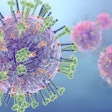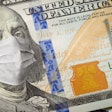
A comprehensive state-by-state analysis of COVID-19 impacts across the U.S. revealed the underlying forces driving wide variations in health, education, and economic performance.
The study, published Thursday in the Lancet, helps explain why the pandemic played out in vastly different ways across the country.
Although the U.S. has the largest economy, and spends more on healthcare than any other country, it maintains the highest number of COVID-19 deaths and one of the highest per-capita fatality rates from COVID-19 globally. But the pandemic impacted states unequally.
Using state-level data from public databases, researchers analyzed government policy responses and population behaviors, including mask use, vaccination, and mobility restrictions, in all states and Washington, DC, from January 2020 through July 2022. They sought to assess states' efforts in mitigating COVID-19 impacts, and whether better COVID-19-related outcomes offset economic, educational, and employment losses.
They found that cumulative COVID-19 standardized death rates varied widely nationwide, with Hawaii and New Hampshire having the lowest (147 and 215 deaths per 100,000, respectively) and Arizona and Washington, DC having the highest (581 and 526 deaths per 100,000, respectively).
U.S. states with higher poverty, lower rates of educational attainment, less access to quality health care, and lower interpersonal trust levels experienced disproportionately higher rates of infections and deaths. States where COVID-19 did the greatest damage had the highest Black populations and the highest percentages of people voting for the Republican presidential candidate in the 2020 election, including Texas, Mississippi, Georgia, and Alabama.
States that imposed more protective mandates, such as those encouraging mask use, mobility restrictions, and higher vaccination rates, and maintained them for longer experienced lower infection rates. However, only vaccine coverage had a strong association with state variation in COVID-19 death rates.
Estimates suggest that if the state with the lowest vaccine coverage (Alabama) adopted the vaccine uptake of the state with the highest vaccination coverage (Vermont), infections and deaths might have been cut by a third. To determine each state's economic situation, the researchers looked at employment figures and state gross domestic product (GDP). Hawaii, Washington, DC, and New York had the largest reduction in employment while Wyoming, Hawaii, and New Mexico fared worse economically.
The analysis found no links between GDP and most health mandates, lower infections, or deaths in the pandemic. However, there was a trade-off with jobs. Mandated restaurant closures and increased mask use were associated with drops in employment, suggesting that job losses may have been less severe in states where people were more willing to risk COVID-19 and participate in shopping and dining out.
One of the most controversial pandemic-related topics, school closures, did not appear to play a role in lower student test results across most states. Instead, the study suggests that score declines were linked with mandates, including mask use and vaccines for state and school employees. “Our immediate priority should be helping support the lowest-achieving students catch up and addressing U.S. educational achievement gaps, which have widened substantially over this pandemic,” Thomas Bollyky, co-lead author and director of the Council on Foreign Relations' Global Health Program, said in a statement.
The authors conclude that understanding the contexts in which infections and deaths were disproportionately clustered in this pandemic will be crucial in designing policy interventions to ensure better health outcomes in future crises. For example, paid family and sick leave and expanded insurance coverage could help lower-income people better access vaccinations and treatment. Additionally, state investments in community organizations may improve vaccine uptake among partisan and marginalized groups.
“The tragic human toll of the COVID-19 pandemic in the U.S.A. challenged conventional assessments of pandemic preparedness and exposed existing vulnerabilities in our societal fabric that were not identical across states,” noted Emma Castro, co-lead author and a researcher at the Institute of Health Metrics and Evaluation. “The nearly four-fold difference in COVID-19 death rates across states suggests that the country as a whole could have performed much better. Examining how specific states fared and identifying commonalities of states that performed well offers important insights about how we can and must respond better to this and future pandemic threats.”



















